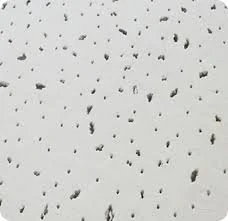Nov . 16, 2024 10:25 Back to list
pvc ceiling vs gypsum
PVC Ceiling vs Gypsum Ceiling A Comparative Analysis
When it comes to selecting materials for ceilings in residential or commercial spaces, homeowners and builders often face a crucial decision which material will best fit their needs in terms of cost, aesthetics, durability, and maintenance? Two popular options are PVC (polyvinyl chloride) ceilings and gypsum ceilings. Each material has its own set of advantages and disadvantages, making them suitable for different applications and preferences. In this article, we will explore the key characteristics of PVC and gypsum ceilings, compare their pros and cons, and help you make an informed decision for your next project.
Understanding PVC Ceilings
PVC ceilings are made from a synthetic plastic polymer. They are available in various designs, colors, and finishes, making them highly versatile. PVC panels are often used in areas such as bathrooms, kitchens, and commercial spaces where moisture and humidity levels are high due to their water resistance. The installation process is relatively straightforward; panels can be easily hung using a grid system or glued directly to the ceiling.
One of the standout features of PVC ceilings is their low maintenance requirement. They are easy to clean with just soap and water, and they do not promote mold or mildew growth. Additionally, PVC is lightweight, which can reduce installation costs and allow for an easier handling process. Furthermore, PVC ceilings often provide good insulation, contributing to energy efficiency.
Exploring Gypsum Ceilings
Gypsum ceilings, on the other hand, consist of gypsum board (also known as drywall or plasterboard), which is known for its strength and soundproofing qualities. Gypsum ceilings have a smooth surface that can be painted or textured, allowing for various aesthetic preferences. They are commonly used in both residential and commercial buildings, offering good fire resistance properties due to the non-combustible nature of gypsum.
The installation of gypsum ceilings typically requires more labor and expertise compared to PVC ceilings. This can lead to higher installation costs. However, once installed, gypsum ceilings are highly durable and can provide a high-end finish. They are also better at sound absorption, making them a preferred option in places where noise control is important, such as offices or theaters.
Comparative Analysis Pros and Cons
pvc ceiling vs gypsum

1. Cost PVC ceilings generally tend to be more affordable in terms of both material and installation costs. Gypsum ceilings, while potentially offering a more refined look, can be more expensive due to labor costs.
2. Durability PVC ceiling panels are resistant to moisture, making them less likely to warp or mold, particularly in humid environments. Gypsum ceilings, while durable, can suffer from water damage if not properly sealed or maintained.
3. Maintenance PVC ceilings have a significant advantage over gypsum ceilings when it comes to maintenance. They are resistant to spills and stains and can be easily wiped clean. Gypsum ceilings may require more effort to clean and maintain, particularly if they are painted.
4. Aesthetics Gypsum ceilings offer a traditional and sophisticated appearance, allowing for intricate designs and finishes. PVC ceilings are available in a wide variety of modern styles and can replicate the appearance of more expensive materials at a lower cost.
5. Installation Installation of PVC ceilings is typically easier and quicker, which can be a significant advantage for projects with tight deadlines. Gypsum ceilings require more skilled labor, and any mistakes during installation can lead to costly repairs in the long run.
Conclusion
In conclusion, both PVC and gypsum ceilings have unique benefits that cater to different needs and preferences. PVC ceilings are an excellent choice for budget-conscious projects that require moisture resistance and low maintenance. They are ideal for areas prone to humidity, such as bathrooms and kitchens. On the other hand, if aesthetics, durability, and soundproofing are more critical to your project, gypsum ceilings may be the better option despite the higher cost and installation complexity.
Ultimately, the choice between PVC and gypsum ceilings should be informed by the specific requirements of your space, your budget, and your design preferences. By carefully weighing the pros and cons, you can select the ceiling material that suits your needs best, enhancing both the functionality and aesthetic appeal of your interiors.
-
Quality Ceiling Trap Doors & Access Panels | Easy & Secure AccessNewsAug.30,2025
-
Durable Ceiling T Grid Systems | Easy InstallationNewsAug.29,2025
-
PVC Gypsum Ceiling: Durable, Laminated Tiles for Modern SpacesNewsAug.28,2025
-
Pvc Gypsum Ceiling Is DurableNewsAug.21,2025
-
Mineral Fiber Board Is DurableNewsAug.21,2025
-
Ceiling Tile Clip Reusable DesignNewsAug.21,2025







